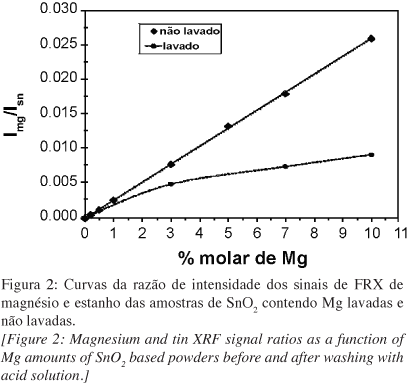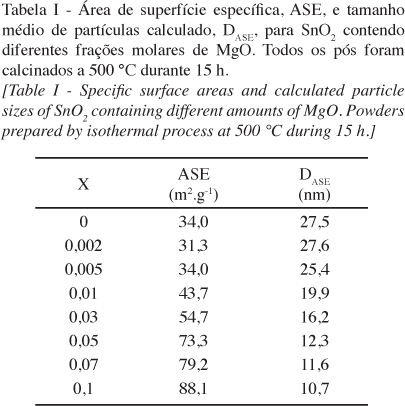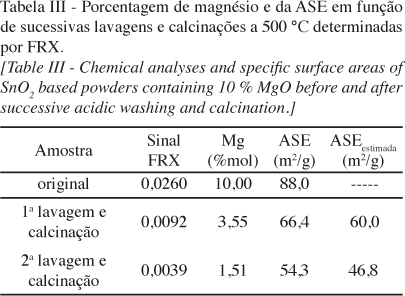Particle size stability is a fundamental requirement in the synthesis and application of nanoparticles. High specific surface area induces an increase of total energy and promotes particle growth. Therefore, there is a need for understanding how to stabilize the surfaces in order to control the particle size and consequent applications in nanotechnology. Surface excess or segregation on the surfaces is usually known to decrease the surface energy by tensoactivity, being widely used in wetting and emulsion technology. However, these principles have been less tested and refined to promote the solid-gas interface stability on nanoparticles technology. Moreover, the quantitative determination of surface excess on nanoparticles is not an easy task and a possible reason is the lack of knowledge of the segregation phenomenon. In this work, quantification of the spontaneous surface segregation of MgO into tin oxide nanoparticles synthesized by a chemical method was carried out exploring the difference of solubility between MgO and SnO2. A chemical analysis by XRF before and after an acid washing demonstrated that, even at 5 mol % of MgO, most of additive was preferentially located in SnO2 bulk, with few surface excess. On the other hand, for MgO amounts larger than 5% most of the additive was on tin oxide surface. Despite the results of quantification are restricted to MgO-doped SnO2 system, the selectivity solubility technique should be effective to quantify any system with different solubility characters.
segregation; SnO2; nanoparticles; tensoactivity









